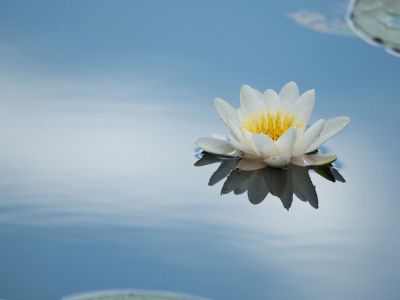Creating an Egyptian garden in the backyard is as simple as incorporating the plants and elements of design from this region.
Egyptian Garden Elements
From a civilization born around the fertile offerings of a river and its delta, water features are a staple of Egyptian garden design. Rectangular fish and duck ponds lined with fruit-bearing trees were commonplace in the ancient gardens of wealthy Egyptians. Fed by irrigation channels, which eliminated the need to manually transport water from the river, manmade ponds allowed ancient Egyptians the opportunity to expand agriculture away from the flood basin of the Nile. Walls constructed of adobe brick were another common feature of Egyptian garden design. Built to differentiate garden spaces and protect vegetables and fruit crops from animals, walls were part of the formal layout of the garden. Like ponds and housing, gardens were rectangular and reflected the Egyptian’s understanding of complex geometric concepts. Flowers, especially, were an essential part of temple and tomb gardens. Ancient Egyptians believed floral fragrances indicated the presence of gods. They symbolically adorned and garnished their deceased with flowers prior to entombment. In particular, papyrus and water lily embodied the ancient Egyptian’s beliefs of creationism, making these two species crucial plants for Egyptian gardens.
Plants for Egyptian Gardens
If you’re adding Egyptian garden elements to your landscaping design, consider incorporating the same flora which was grown in ancient residences near the Nile. Select these special plants for Egyptian gardens: Trees and Shrubs
AcaciaCypressEucalyptusHennaJacarandaMimosaSycamoreTamarix
Fruit and Vegetables
Cos LettuceDate PalmDillFigGarlicLentilMangoMintOliveOnionWild Celery
Flowers
Bird of ParadiseCornflowerChrysanthemumDelphiniumHollyhockIrisJasmineLotus (water lily)NarcissusPapyrusRose PoincianaRed PoppySafflowerSunflower
